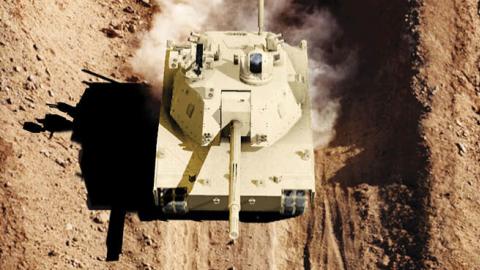Robots, unmanned systems, autonomous vehicles–they go by many names, but ships and aircraft without an onboard operator are increasingly portrayed as the solution to a web of challenges and opportunities facing the U.S. military from tightening budgets to the home field advantages of great powers and regional rivals.
Depending on the critic, however, the U.S. military’s efforts to develop unmanned systems are either moving too fast or too slow. The answer is both. Because the DoD fell behind in aspects of America’s long-term competition with China and Russia, it is now accelerating development of unmanned systems. But in many cases development is outpacing efforts to assess how unmanned systems would be used. As a result, some programs aim for missions beyond the reach of today’s technology while others fail to exploit existing capabilities.
**Without a concept, unmanned development moves too fast…**
The U.S. military is moving too fast to field autonomous systems with capabilities like those of manned platforms, instead of focusing on the unique contributions unmanned systems could provide. For example, the Navy plans to build a large unmanned surface vessel, or LUSV, that could act as an offboard missile magazine for surface combatants to conduct strikes against enemy ships and targets ashore.
Today’s technology is not up to the challenges of autonomous multi-month endurance or self-defense at sea; the LUSV would therefore need to operate in concert with manned ships, reducing its value in distributing the fleet. The Navy argues the LUSV could be optionally-manned to help with navigation, repairs, or defense, but the ship isn’t designed to house sailors for more than a few days. If it had first developed the LUSV’s operational concept, the Navy may have found a fully-manned platform with significant automation and autonomy would be a better application of the $100-$200 million needed for each LUSV. Congress has now curtailed the program.
The Army’s Optionally Manned Fighting Vehicle, or OMFV, faces a similar set of problems. Intended to carry troops to the front lines, the OMFV would replace Cold War-era M2 Bradley armored transports as well as operate remotely or autonomously to provide additional firepower during combat. The OMFV, however, shares LUSV’s vulnerability to capture or material failure and will cost about the same as the M2 it replaces; the risk of allowing an OMFV to operate autonomously on its own may therefore be too high. If the OMFV’s concept had been more fully developed, the Army may have determined a manned platform was more appropriate for this mission and used its new Robotic Combat Vehicle for remote independent or autonomous operations.
**And existing unmanned systems aren’t applied to new concepts**
The DoD faces shortfalls today in important missions that could be filled with existing unmanned technology, but the military services resist displacing incumbent manned platforms. Unmanned vehicles, including satellites and aircraft, have performed surveillance, reconnaissance, and responsive strikes for decades. Cruise missiles are also increasingly autonomous, and now some can largely find and engage fixed or slow-moving targets on their own. The operational concepts used in these applications could be extended to new missions.
For example, anti-submarine warfare, or ASW, essentially consists of surveillance, tracking, and responsive strike. In contrast to the speed of air warfare, ASW prosecutions can take hours or days; even reactive engagements are conducted over minutes rather than seconds. And unlike the need for definitive effects in strike warfare, an ASW attack can be successful simply by causing the submarine to withdraw or forego an attack out of concern for counterdetection.
These attributes make ASW a good fit for today’s unmanned systems capable of persistent monitoring and controlled by a human in the loop. Stationary unmanned sensors like SOSUS can monitor chokepoints and other likely transit lanes. Unmanned aircraft like the MQ-9 can deploy sonobuoys as well as process data from them and sensors on unmanned undersea vehicles. And unmanned aircraft or the Navy’s medium unmanned surface vessel, or MUSV, could prosecute and engage submarines with torpedoes or smaller, inexpensive depth bombs. The Navy should accelerate fielding the MUSV and modified unmanned aircraft for ASW.
Electronic warfare, or EW, is another mission well-suited for unmanned systems. The increasing range of air defense systems renders standoff EW tactics potentially unexecutable, whereas today’s manned EW aircraft are too costly and few in number to risk on stand-in jamming. The U.S. military instead needs expendable or attritable systems that can jam and deceive enemy sensors and communications from within enemy weapons range.
Today’s expendable Miniature Air-Launched Decoy can conduct stand-in EW, but lacks the range or endurance to accompany bombers, strike-fighters, or cruise missiles from likely launch points. Unmanned aircraft may be better suited to deliver stand-in EW effects. For example, long-endurance drones like the Army’s MQ-1 Gray Eagle with the Multi-Function Electronic Warfare Pod could persistently jam and confuse enemy radios and radars from the edge of enemy air defenses at acceptable risk given their modest cost. And to escort bombers and fighters to their targets, faster unmanned aircraft such as Predator C Avenger, XQ-58A Valkyrie, or other members of the Air Force’s Skyborg family could provide penetrating EW effects.
The DoD has a wide range of existing and soon-to-emerge unmanned autonomous systems that could contribute to important missions. The U.S. military’s approach to unmanned system development, however, is unfocused and often chases new technology instead of solving shortfalls in today’s operational concepts. And when new technology is needed, a lack of operational concepts often leads the U.S. military to pursue systems that won’t work as intended. DoD should establish a new unmanned system strategy and set priorities to solve these problems, or it risks being unable to sustainably conduct essential missions to deter and defeat its competitors.
Read in Forbes
















